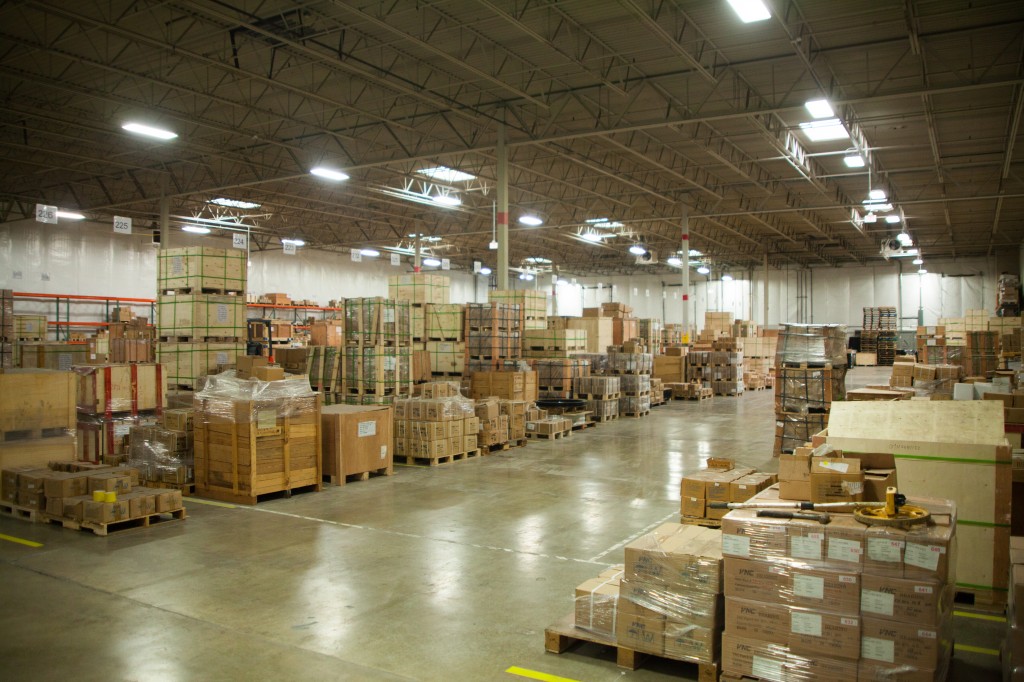VNC Moves to New Facility to Better Serve Customers
Posted May 9, 2016 by admin
Earlier this year, the VNC headquarters moved to a new facility in order to meet the demands of our growing business. We figured what better way to get you the scoop than an interview with VNC Bearing’s President, Frank Reschke.
After finally being able to pin down Frank for a few minutes, we asked him some questions about the process and the “why” behind the big move. Here’s what he had to say:
- Q: Why did VNC Bearing move to a new facility?
A: Thanks to the support we’ve received over the years from our customer base, we basically outgrew our old facility. This limited the amount of people we could employ and the amount of inventory we could carry. We knew what it would take to achieve our long term goals and the space we had just wouldn’t work. While our old space would have worked for a while longer, we took advantage of the opportunity for the new facility when it became available.
- Q: Why did VNC choose to stay in the same general area as your old facility?
A: At VNC our greatest asset has always been our team members. A paramount issue in selecting a new location was keeping the team together. Our group has been together for a long time and losing even one member was not an option. Being fortunate enough to find a suitable facility right across the street ensured we would not put an undue burden on anyone.
- Q: What all had to be moved during this process?
A: We moved over 2,300,000 pounds of freight, most of which happened over a four day span. With the proper planning we were able to stay operational during the entire move. We had two trailers constantly shuffling back and forth between the two locations so we did not miss shipping a single order! The phones and internet connections were in place at both locations prior to the start of the move and it was basically flipping a switch at the end. My team did a great job coordinating all of the little details that had to come together for the move to be successful.
- Q: What energy or “green” initiatives were put into place in the new facility?
A: We made several decisions during the design and building process that would reduce our company’s carbon footprint. One of the biggest improvements was to change out all of the lighting to run on 277 volts. This reduced the amount of energy required to properly light the facility while providing a better and brighter environment for our staff. All of the lighting is also on motion sensors which shut off when no one is in the area. Everything from bathroom fixtures to proper HVAC zoning was addressed.
- Q: What can you tell us about the new office layout?
A: We spent the necessary time during the planning stage to improve the efficiency and communication between team members and departments. We decided to go with a more open floor plan which improved communications within departments. Also, we now have a much better “working triangle” between Sales, Engineering and Operations. With all three areas adjacent to each other the interaction between departments has greatly improved.
- Q: What other types of upgrades did you make?
A: We felt it was important to upgrade our phone system and computer servers. Expanding the size of our inspection lab allowed us to purchase new measuring equipment which will increase our capabilities.
- Q: What do you have in the new building that you didn’t have in the old building?
A: Naturally one of the reasons for moving was to increase our office and warehouse space. We demolished over 90% of the existing office and worked on a layout to provide maximum efficiency. We also expanded our Inspection Lab. One of the intangibles that we achieved was a better working environment for our team including a more suitable break room with glass windows and a full kitchen.
- Q: How will this move benefit your customers?
A: Everything we do allows us to provide better service to our customers. Improving the environment for the team and upgrading our systems will allow them to do an even better job than they have in the past!
- Q: What are VNC’s plans for the future?
A: It is always our goal to get better every day. We hope to keep trending upward like we have for the past several years.
To wrap things up, Frank stated “The bottom line is that this new facility will help VNC better serve the customer and allow for increased production, sales, and fulfillment. With our order volume increasing year over year, we are confident this was the right move for our business.”
Contact VNC today to learn how we can help you find the right bearing, at the right price.
